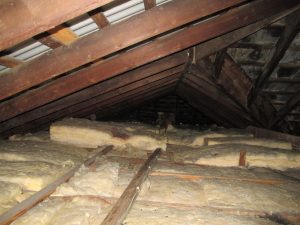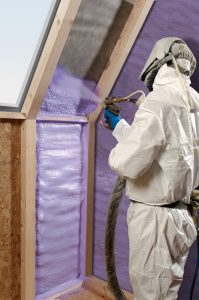List of Roof Attic Insulation Contractors
This is a listing page for Roof Attic Insulation Contractors in your area.
Some brief information on Roof Attic Insulation.
Homes built before 1980 were very energy wasteful. Since then we in Ireland have become very aware of the effects of wasting energy thus many improvements have been introduced into our homes. A lot has been achieved in terms of energy renewal upgrades but a lot more has to be done. You should also be aware of Exterior Wall, Interior Wall and Cavity Wall insulation
Pitched roof with loft or attic space
Attic Floor Joist Insulation
One of the greatest areas of heat loss in our homes is the roof attic loft area. With no insulation in the roof up to 30% of heat is lost there during the colder months. Many homes since the 1980's have installed some form of roof or attic (loft) insulation. However, not many dwellings would achieve the standard under current Government guidelines on Home Energy. The Building Regulation Technical Guidance Document, TGD Part L, stipulates for attic joists a minimum depth of insulation to be 300 mm for mineral wool. This should yield a U-Value of between 0.13 and 0.16 W/m²K. Read the SEAI Homeowners guide to Attic and Rafter insulation for further information.

roof attic insulation
If using PIR rigid foam insulation or any other type of insulating material make sure to check the stated U-Values before purchasing. Check Irish Agrément Board Certificate information on the side of the packaging to determine the thermal resistance values (R) m².K/W. The U-Value is the inverse of R, i.e. U = 1/R W/m²K.
Insulation material should have at the very least a British or an Irish Agrément Board Certificate this will give you the energy-specific information you require for quality purposes. An Agrément Board Certificate awarded to Ecocel for its Loft Insulation product is the perfect example.
Good insulation in the roof space means a colder attic or loft. This means your water pipes will be more exposed to the exterior elements. Therefore, you should make sure to:
- Insulate all water pipes.
- Cover the water tank with at least 300 mm of mineral wool insulation or equivalent.
- Do not cover underneath the water storage tanks because you need the tank water to be at the same temperatures as the room directly underneath, such as a bedroom.
A Word of Caution:
- For cold attics (where attic floor joists are insulated instead of rafters), never block the eaves ventilation areas. Cold attics need cross ventilation to prevent timber rot.
- Never place electrical wiring underneath mineral wool insulation.
- Spot lamps terminating in the attic should be properly housed before covering with mineral wool or equivalent insulation.
Rafter Insulation
The principal is much the same as for insulating floor joists. The major difference is that you are converting the attic into a warm area. A lot of the restrictions such as electric wiring, lighting, and plumbing will be less of an issue. An alternative to using mineral wool insulation for rafters is spray foam insulation. This is very quick to install with the added advantage of being air tight. PIR rigid foam insulation board would not be practical for rafters. Instead you could finish with a layer of dry-lining board

Spray Foam Insulation 2
Insulating Flat Roofs
If you are intending upgrading the insulation on a flat roof it is best to contact the contractor for advice. This may entail some degree of structural works.
Further Information
The type and method of insulation required in the roof area will very much depend on the style of the roof involved, For Example:
- In the case of cold attics the floors can be insulated between the joists using mineral wool etc. or above the joists using PIR rigid foam insulation board.
- For warm attics the insulation is done between the roof rafters or rigid foam insulation boards are fixed against the rafters
- In the case of flat roofs it is preferable to insulated with rigid foam insulation board.
There are a myriad of insulation materials used for insulating the roof areas. As up to 30% of heat can be lost from this part of your home it is important to give very careful consideration to the overall u-value of the insulation material considered.
For further information on attic insulation see the Which guide to Loft Insulation types is an excellent
The main types of Roof and Attic Insulation materials are:
- Mineral wool insulation.
- Sheeps wool.
- PIR rigid foam insulation board.
- Spray foam insulation.
- polystyrene beads.
Advantages of Roof Attic Insulation:
- A very efficient form of energy conservation.
- Low installation costs.
- Improved u-values
- Low cost payback periods.
- Improved BER rating.
- Lower energy bills.
Disadvantages of Roof Attic Insulation:
- The initial installation costs.
- Makes your attic colder so check if items stored there need to moved to warmer locations




